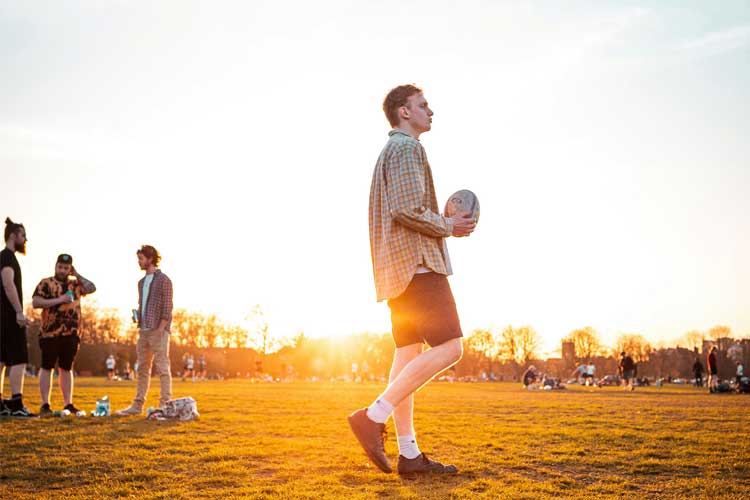Article overview:
Tactical kicking is crucial in rugby for both attack and defence, impacting match dynamics, creating scoring opportunities, and disrupting opponents’ strategies. Since rugby’s professionalization in 1995, World Rugby has frequently introduced new laws, such as the 2009 change affecting territory-gaining strategies and the 50:22 law in 2022, which allows teams to receive the lineout throw when kicking from their half into the opponents’ 22. This law aims to compel defensive players to cover the backfield, reducing defensive line speed and creating more space for the attacking team.
Analysis of the 2019 Rugby World Cup showed winning teams averaged more kicks per match than the losing teams, with flyhalves and scrum halves being key kickers. The study by Strydom et al.(2024) investigated the 50:22 law’s impact on kicking profiles by comparing the 2021 and 2022 seasons in South African rugby tournaments, aiming to understand its influence on tactical approaches and the success rate of 50:22 kicks during the 2022 season.
Methodology:
177 matches, focusing on the 2021 (N = 85) and 2022 (N = 92) Currie Cup and Varsity Cup rugby tournaments, were analysed to assess the impact of the 50:22 law trial using video-based performance analysis. A two-level analysis was conducted, involving the coding of all general play kicks in 2021 and 2022 seasons, and re-examining 2022 season kicks initiated from the team’s own half for 50:22 kicks.
Main findings:
1. Change in Kicking Profile (2021 vs 2022):
- The was an overall reduction in the number of kicks from 2021 to 2022 due to players and teams adapting to new laws and changing strategies
- Teams might kick less to minimise risks and rely on alternative strategies like running or passing.
- There was an increase in kicks following turnovers due to exposed backfield spaces.
- Kicking in Critical Phases: There was an increased percentage of kicks in the fourth quarter as leading teams manage tempo and trailing teams seek scoring opportunities
- Positional Changes in Kicking: Decrease in kicks by flyhalves and fullbacks; increase by scrum halves and inside centres, with more box kicks and kicks with no preceding passes.
- Left and Right-footed Kicks: Tactical use of left and right-footed combinations.
2. 50:22 Kick Attempts (Successful vs Unsuccessful):
- Strategic Positioning: Establishing a ruck at midfield for better execution of 50:22 kicks.
- Tactical Allocation: Kicking roles were assigned based on field positioning and players’ dominant foot.
- Attacking Strategy: Use of 50:22 kicks to gain a lineout in the opponent’s 22 m area, creating scoring opportunities.
- Timing of Successful Kicks: High number of successful 50:22 kicks in the fourth quarter.
3. Challenges and Adaptations:
- Adjustment Period: Players and coaches undergo a phase of unlearning the old laws and adapting to new ones, potentially leading to errors.
- Technical and Tactical Challenges: Issues with kicking angles, distances, timing, and increased complexity or ambiguity of the new law.
- Pressure and Decision-Making: High-pressure situations could affect players’ confidence and decision-making abilities.
- Refereeing Variability: Inconsistent enforcement of the new law by referees creating uncertainty.
- Opposition Exploitation: Opposing teams might exploit uncertainties related to the new kicking law.
4. Coaching Strategies:
- Emphasis on Execution: Coaches should stress the importance of timing, execution, and control in kicking.
- Effective Communication: Fostering a cohesive team environment with a shared understanding of game plans.
- Team Coordination: Encouraging teamwork in chase lines, kick receipts, and defensive positioning.
Practical points:
- The study offers valuable insights for coaches, players, and performance analysts to adjust training programs, enhance team preparedness, and improve tactical approaches for the 50:22 law in rugby.
- Training should focus on improving kicking skills, accuracy, distance, and versatility in executing various types of types. Additionally, emphasis on technique, decision-making, and situational awareness in training sessions is crucial, as it reveals players’ composure under pressure and decision-making abilities.
- Right-footed players executed most 50:22 kicks; having both right and left-footed kickers provides tactical advantages.
- Analysing opposing teams’ defensive patterns and kick-chase tactics helps identify effective kick areas and develop strategies to exploit defensive weaknesses.
- The best zonal location for kicks is identified as Zone C Channel 2, providing insights into players’ strengths and areas for improvement.
Full research article here: https://www.tandfonline.com/doi/full/10.1080/24733938.2024.2351609
Article written by: Wikus Strydom




